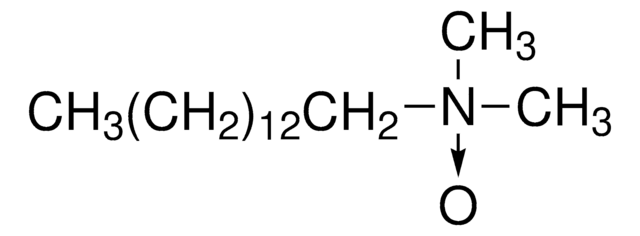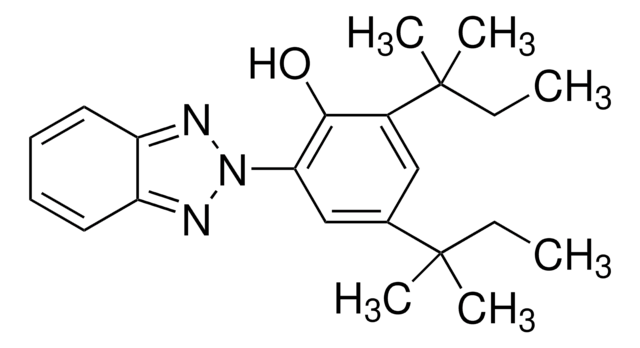40460
N,N-Dimethylhexadecylamine
technical, ≥95% (GC)
Synonym(s):
1-(Dimethylamino)hexadecane, N,N-Dimethylpalmitylamine
About This Item
Recommended Products
grade
technical
Assay
≥95% (GC)
≥98.0% (NT)
impurities
≤0.3% water
density
0.801 g/mL at 20 °C (lit.)
SMILES string
CCCCCCCCCCCCCCCCN(C)C
InChI
1S/C18H39N/c1-4-5-6-7-8-9-10-11-12-13-14-15-16-17-18-19(2)3/h4-18H2,1-3H3
InChI key
NHLUVTZJQOJKCC-UHFFFAOYSA-N
General description
Application
- As pore size mediator for the synthesis of monodispersed mesoporous silica nanoparticles.
- As swelling agent in the fabrication of colloidal mesoporous silica nanoparticles of a tunable mesopore size.
- Preparation of 1,4-bis(N-hexadecyl-N,N-dimethylammonium)butane dibromide, Gemini surfactant.
Signal Word
Danger
Hazard Statements
Precautionary Statements
Hazard Classifications
Acute Tox. 4 Oral - Aquatic Acute 1 - Aquatic Chronic 1 - Eye Dam. 1 - Skin Corr. 1B
Storage Class Code
8A - Combustible corrosive hazardous materials
WGK
WGK 3
Flash Point(F)
287.6 °F - closed cup
Flash Point(C)
142 °C - closed cup
Personal Protective Equipment
Certificates of Analysis (COA)
Search for Certificates of Analysis (COA) by entering the products Lot/Batch Number. Lot and Batch Numbers can be found on a product’s label following the words ‘Lot’ or ‘Batch’.
Already Own This Product?
Find documentation for the products that you have recently purchased in the Document Library.
Customers Also Viewed
Our team of scientists has experience in all areas of research including Life Science, Material Science, Chemical Synthesis, Chromatography, Analytical and many others.
Contact Technical Service
















